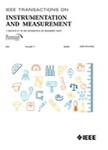版权所有:内蒙古大学图书馆 技术提供:维普资讯• 智图
内蒙古自治区呼和浩特市赛罕区大学西街235号 邮编: 010021

作者机构:Hefei Univ Technol Sch Mech Engn Anhui Prov Key Lab Aerosp Struct Parts Forming Tec Hefei 230002 Peoples R China Hefei Univ Technol Inst Ind & Equipment Technol Hefei 230002 Peoples R China Hefei Univ Technol Sch Comp & Informat Hefei 230061 Peoples R China State Key Lab High End Compressor & Syst Technol Hefei 230031 Anhui Peoples R China Chinese Acad Sci Inst Automat Beijing 100190 Peoples R China
出 版 物:《IEEE TRANSACTIONS ON INSTRUMENTATION AND MEASUREMENT》 (IEEE Trans. Instrum. Meas.)
年 卷 期:2025年第74卷
核心收录:
学科分类:0808[工学-电气工程] 08[工学] 0804[工学-仪器科学与技术]
基 金:National Natural Science Foundation of China [52375089, 61906195] Key Research and Development Plan of Anhui Province [202304a05020059] Open Foundation of State Key Laboratory of High-End Compressor and System Technology [SKL-YSJ202307] Fundamental Research Funds for the Central Universities of China [PA2023GDSK0055]
主 题:Skeleton Mars Rolling bearings Refining Fault diagnosis Data models Accuracy Machine learning Inference algorithms Bayes methods Causal discovery causal effect information flow missing data rolling bearing
摘 要:Missing data phenomenon is ubiquitous in many domains which imposes difficulties on the reconstruction of causal relationships due to incomplete datasets. Currently, although causal discovery techniques tackling data missing complete at random (MCAR) and missing at random (MAR) are known to the public, attaining causal structure from data missing not at random (MNAR) is still beyond our reach. In this article, a causal effect and information flow Peter Clark (CEIFPC) algorithm is proposed, which uses a missingness graph to represent the missing mechanism and combines causal effect correction criteria (CECC) with information flow to recover the potential causal structure. First, in the sketchy stage, a test-wise deletion Peter Clark (TD-PC) algorithm for causal skeleton learning is introduced. Second, in the refining stage, by employing CECC, one can identify erroneous edges within the causal skeleton and subsequently eliminate them. Finally, in the orientation stage, the directional strategies from the Peter Clark (PC) algorithm and information flow are incorporated to accurately determine the directions of causal edges. Our proposed CEIFPC algorithm not only theoretically yields asymptotically correct results but also demonstrates superior performance in recovering the potential causal structure under nonrandom missing data. As shown by experimental results, our proposed method, CEIFPC, exhibits good performance on both synthetic and real bearing failure datasets.